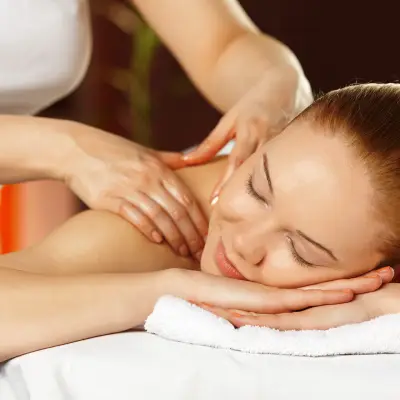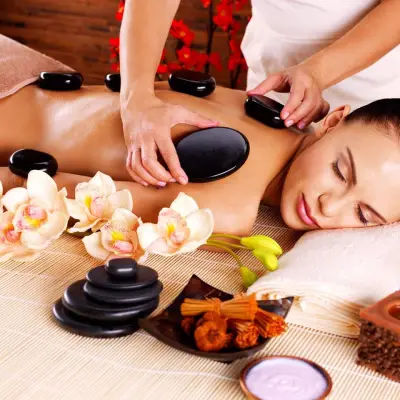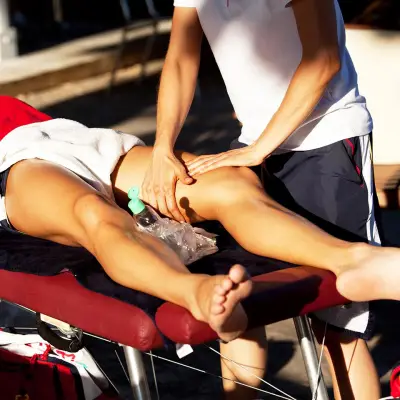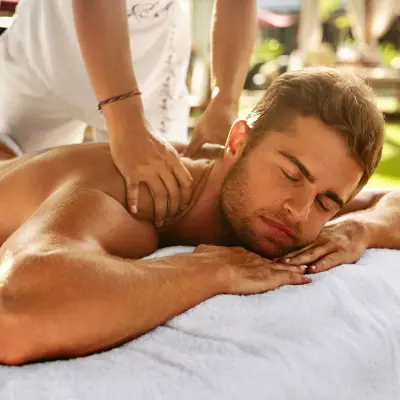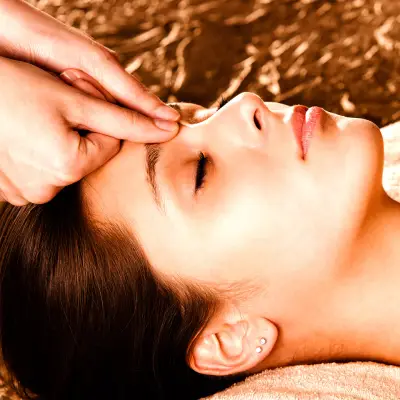If you’re exploring ways to ease muscle tension and support your general wellbeing, Swedish massage is a great place to start. This gentle, comforting form of therapy calms the body and mind, making it one of the most popular types of massage worldwide. Let’s take a closer look at the meaning, techniques, benefits, and common questions surrounding Swedish massage therapy.
Jump to:
- What is Swedish Massage?
- Where Did Swedish Massage Come From?
- Key Techniques in Swedish Massage
- What is a Full Body Swedish Massage?
- What Happens During a Swedish Massage?
- What Are the Benefits of Swedish Massage?
- Swedish vs Regular Massage: What’s the Difference?
- Common Questions About Swedish Massage
- Study Swedish Massage with Centre of Excellence
Recommended for you!
Best SellersWhat is Swedish Massage?
Swedish massage is a traditional form of therapeutic massage that uses long strokes, kneading, tapping and gentle friction to relax the entire body. It’s often referred to as relaxing because of its calming nature and flowing rhythm.
The definition of Swedish massage includes movements designed to encourage blood flow, reduce tension and create a feeling of deep relaxation. It’s usually performed on a massage table with oils or lotions to allow smooth gliding over the skin.
Unlike deeper massage methods that target chronic pain or injuries, Swedish massage focuses on comfort and gentle muscle release. This massage technique is ideal for those looking to unwind rather than tackle intense muscular problems.
Where Did Swedish Massage Come From?

The technique behind Swedish massage was influenced by the work of Per Henrik Ling, a Swedish physiologist in the 19th century. Although he didn’t create the exact version we know today, his methods of movement and therapeutic touch laid the foundation for what would become the Swedish massage technique.
Over time, the approach was developed further by other European practitioners and later adopted by massage therapists worldwide. Today, the term refers to this particular style of bodywork, rather than a location or nationality.
Key Techniques in Swedish Massage
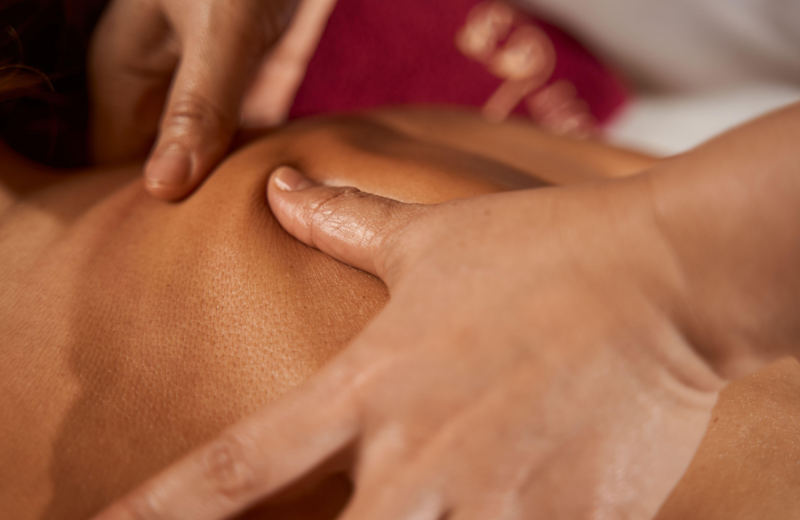
Swedish massage therapy uses a blend of five core techniques. These are carefully combined to ease muscle tension, boost circulation and help the body relax from head to toe.
- Effleurage: These are smooth, sweeping strokes that warm up the muscles and help distribute massage oil across the skin. Effleurage is often used at the start and end of the session.
- Petrissage: This involves kneading, rolling and lifting the muscles to release tension and improve blood flow. It’s a little like gently squeezing dough.
- Tapotement: Rhythmic tapping using the side of the hand or fingertips. This can be stimulating or soothing, depending on the pressure and speed.
- Friction: Firmer, circular motions designed to work deeper into the tissue, often around joints or areas of tension.
- Vibration: Gentle shaking or trembling movements that encourage muscle release and relaxation.
All of these methods come together to create a soothing and effective Swedish massage treatment, tailored to your comfort level.
What is a Full Body Swedish Massage?
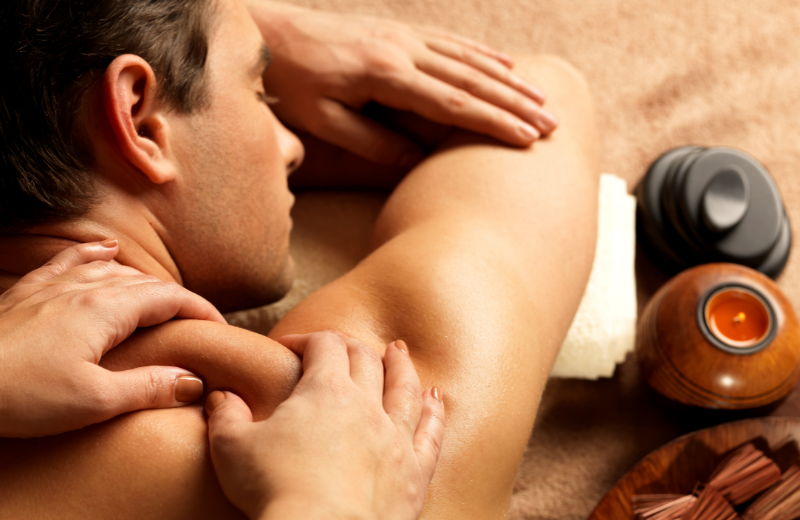
A full-body Swedish massage is exactly what it sounds like—a treatment that includes your entire body, from head to toe. Typically lasting 60 to 90 minutes, it covers your back, shoulders, arms, hands, legs, feet, neck and sometimes your face or scalp.
It usually begins with the back and shoulders before moving to the legs, then the arms and hands, and finally finishing with the neck and head. Some therapists may include gentle face massage or stretching, depending on your preferences.
It can help with mild to moderate knots, especially through petrissage and friction techniques. However, if your muscles are very tight or sore, a deep tissue massage might be more effective.
If you're concerned about modesty, you’ll be draped with towels throughout the massage, with only the area being worked on uncovered.
What Happens During a Swedish Massage?
When you book a Swedish body massage, your experience will usually include:
- A brief consultation to discuss your needs or any problem areas
- Time to undress to your comfort level (you can keep your underwear on)
- Lying on a massage table under a towel or sheet
- Relaxing while the therapist applies massage techniques using oil or lotion
You don’t need to take everything off for a Swedish massage; just enough to allow access to the areas being worked on. If you prefer to remain partially dressed, you can absolutely do so, and your therapist will adapt the treatment accordingly.
What Are the Benefits of Swedish Massage?

Swedish massage benefits both the body and mind, offering more than just a relaxing experience. It can play a role in supporting your emotional, physical, and mental health. Here are some of the most well-known effects:
- Reduces physical stress and anxiety: The gentle strokes and calming atmosphere help trigger the body’s relaxation response, which reduces levels of cortisol, the stress hormone. As a result, many people leave feeling emotionally lighter and more at ease.
- Relieves muscle tension and stiffness: Through kneading and circular pressure, Swedish massage works into the muscles to release built-up tightness. It’s particularly effective for those with desk jobs or anyone experiencing general physical fatigue.
- Encourages better sleep: Swedish massage promotes deep rest by soothing the nervous system. When your body is calm and your muscles aren’t holding tension, it's much easier to fall asleep and stay asleep throughout the night.
- Boosts circulation and lymphatic flow: The flowing movements help blood move more freely through the body, which delivers oxygen and nutrients to tissues more efficiently. It also supports lymphatic drainage, helping your body clear out toxins and waste products.
- Improves flexibility and mobility: Regular massage can loosen muscles and connective tissue, which improves your range of motion. This is especially helpful if you feel stiff, are recovering from a mild injury, or just want to stay more agile as you age.
- Supports overall emotional wellbeing: Touch is a powerful tool for connection and calm. The nurturing experience of a Swedish massage can help lift your mood and give you a greater sense of self-awareness and care.
Swedish vs Regular Massage: What’s the Difference?
The difference between Swedish and regular massage often comes down to what you mean by "regular". For many, Swedish massage is the standard choice in spas and wellness clinics. However, “regular” could refer to any number of treatments, like sports massage, deep tissue or aromatherapy.
Swedish massage is best for relaxation, light tension and general stress relief. If you’re after a calming experience rather than a corrective or clinical one, Swedish massage is often the better option.
Recommended for you!
Best SellersCommon Questions About Swedish Massage
Do you wear clothes for a Swedish massage?
Usually no. Most people undress to their underwear, but you're always covered with a towel for modesty. The goal is comfort and relaxation, and your therapist will ensure you feel secure at all times.
Is Swedish massage done with clothes on?
It can be, but you’ll get the full benefit with direct contact to the skin. Therapists typically use oil or lotion for smoother movements, so undressing is recommended, but never required. You can choose what feels best for you.
Does Swedish massage include stretching?
Some therapists may include light stretching, especially if it helps with mobility or relaxation. However, stretching is not a core feature of Swedish massage. If you’re looking for a style that focuses on assisted stretching, Thai massage may be more suitable.
Does Swedish massage include the bum?
It can, but only if you’re comfortable with it. The gluteal muscles are a common area for tension, and some therapists include them as part of a full-body Swedish massage. This is always handled professionally, and you’ll be properly draped throughout.
Do they massage your face during a Swedish massage?
They might, especially in a full-body Swedish massage. Face massage is often done with gentle, soothing strokes and can be very relaxing. It’s entirely optional and typically discussed beforehand.
Why did my Swedish massage hurt?
If your Swedish massage felt uncomfortable, it may be due to the pressure being too firm or your muscles being especially tight. Always communicate with your therapist; they can adjust their technique to suit your comfort level.
What can you not do after a Swedish massage?
Avoid intense exercise, hot baths, alcohol or caffeine immediately afterwards. These can interfere with the relaxing effects of the treatment. Instead, drink plenty of water and give your body time to rest and rebalance.
What are the disadvantages of Swedish massage?
In rare cases, you may feel a bit sore or tired after your session, especially if it’s your first massage or your muscles were particularly tense. Swedish massage may not be suitable if you have certain medical conditions, so always check with a healthcare provider or your therapist beforehand.
Study Swedish Massage with Centre of Excellence
At Centre of Excellence, you can explore massage therapy in your own time and at your own pace. Our Swedish Massage Diploma Course is designed for anyone who wants to understand the theory and practical skills behind this popular therapy. You’ll learn the full Swedish massage routine, including anatomy, health and safety, and how to confidently deliver a full body treatment. Enrol now for a limited price of £29!


